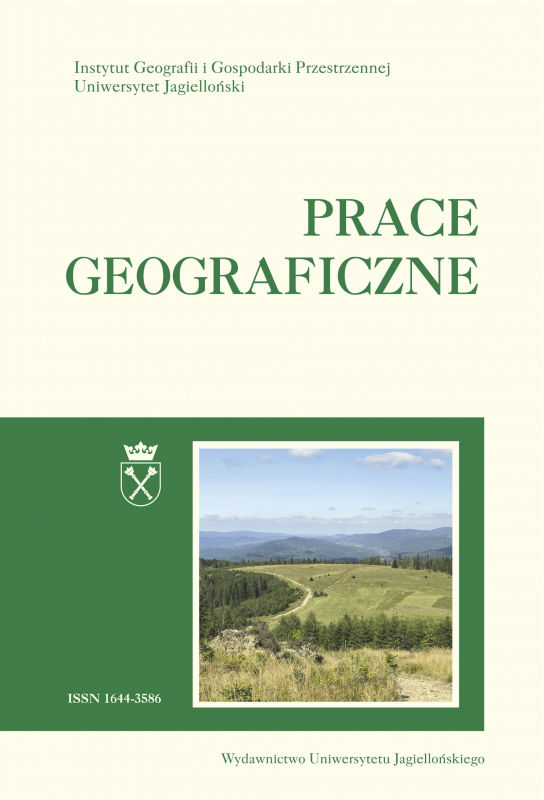Termiczne pory roku w Szymbarku (1968 – 2013)
Thermal seasons at Szymbark (1968 – 2013)
Author(s): Witold Bochenek Subject(s): History, Geography, Regional studies, Physical Geopgraphy, Historical Geography, Recent History (1900 till today)
Published by: Wydawnictwo Uniwersytetu Jagiellońskiego
Keywords: thermal seasons; classification by Makowiec; Szymbark;
Summary/Abstract: The article contains an analysis of the duration and the dates of the start of thermal seasons of the year, distinguished on the basis of the average daily air temperature at the Institute of Geography and Spatial Organization Research Station at Szymbark over a period of 46 years ( 1968–2013 ). To determine the initial dates of thermal seasons a method proposed by Makowiec (1983 ) was used. According to this method, the year was divided into eight thermal seasons, with temperature threshold values : 0, 5, 10 and 15 °C. The classification by Makowiec is based on the growth or fall of cumulative ranks of air temperature diminished by the temperature threshold value for a particular season. The determination of the initial dates enabled the calculation of the length of the seasons. The long-term analysis involved also the tendencies of length and changes of the initial date of a given season. The location of the meteorological station enables to expand the area of the interpretation of results into the borderland of the Beskid Niski Mts and the Carpathian Foothills. A high variability of the dates of the start and the duration of seasons was observed. The trends of duration and starting dates are multidirectional. The longest season is summer ( 89 days ), which starts increasingly earlier and lasts increasingly longer. An increase in duration also refers to pre-spring and autumn. Increasingly shorter winters and springs were also observed within the multi-year period.
Journal: Prace Geograficzne
- Issue Year: 2016
- Issue No: 147
- Page Range: 67-80
- Page Count: 14
- Language: Polish

